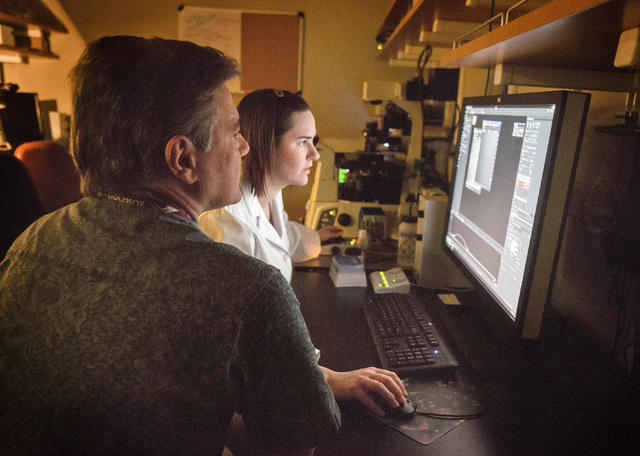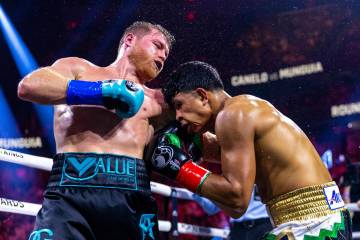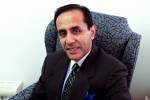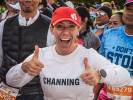Doctor training takes different paths
Medical schools produce two types of doctors, and when Roseman University opens its medical school in Summerlin in 2017, it will offer a different degree than graduates now get from Southern Nevada’s other medical school, Touro University in Henderson.
Roseman will offer a traditional medical doctor degree based on allopathic medicine, while Touro offers a DO, or Doctor of Osteopathic Medicine.
If UNLV gets the go-ahead for a medical school, it will follow the allopathic course.
Little separate the two degree types, because they have similar curricula. State licensing and hospitals don’t distinguish between the degrees.
Osteopathic medical training is known for its holistic approach by treating the entire patient and the focus of the musculoskeletal system and use of osteopathic manipulative treatment. It has traditionally emphasized prevention of medical problems, not just treatment.
Osteopathic medicine grew from a health care reform movement that started after the Civil War in response to the belief that doctors of the day overprescribed medicines. Osteopathic training focused on medicine that emphasized preventative care and integration of the body’s systems. Experts say osteopathic schools emphasize those principles, but both groups today practice medicine in the same way.
The American Medical Student Association says that, despite a historical stigma against osteopathic medicine, graduates of both programs are licensed in all states and students in both schools complete a required residency program. It reports that while osteopathic schools are growing, the “perceived differences” between allopathic and osteopathic physicians is narrowing.
“The difference is philosophical,” said Mitchell Forman, dean of the College of Osteopathic Medicine at Touro. “We embrace from day one that the body has the innate ability to heal itself. There’s a close relationship between the body, mind and spirit on how it affects health and a close relationship between musculoskeletal system and health. We embrace it and teach it from day one as part of understanding how manipulative medicine can assist in the treatment and diagnosis of individuals.”
Forman said students get the same coursework as an allopathic program plus the osteopathic philosophy, and most go into postgraduate allopathic training programs, he said.
About one in seven students nationwide are in osteopathic programs, Forman said.
Osteopathic physicians are found in all specialties, but the majority of Touro graduates focus on family practice, internal medicine and pediatric care.
“Some of that is perception,” Forman said. “We haven’t done a good job of educating the public about what osteopathic medicine is or not. There’s a misunderstanding of what the profession is all about. Some have compared it to a chiropractor. It’s not.”
Osteopathic enrollment around the country has grown by 125 percent in the past decade, in comparison to a 30 percent growth rate for allopathic schools, Forman said.
Roseman has chosen the allopathic approach, which requires a research component.
“The MD program was the path for us to go,” said Roseman president and co-founder Renee Coffman. “Touro is already here. There’s no need to go head-to-head with them. Another focus of our mission going forward was to grow our research, and an MD school requires a good research enterprise underpinning.”
Coffman said the groundwork started two years ago when the university began building a medical research program in leased laboratories at the former Nevada Cancer Institute in Summerlin. Roseman researchers focus on cancer, diabetes, obesity, and Alzheimer’s and Parkinson’s diseases, he said.
“If you look at requirements for accreditation, with allopathic medical schools the expectation (is) there’s a significant research mission associated with that, and you have to grow that research mission first,” Coffman said. “It doesn’t work to run a medical school and (expect) that is going to make research come. The research infrastructure really needs to be there, so we began building that.”
Robert Lang, executive director of UNLV’s Lincy Institute and an advocate for an allopathic school at his university, said the difference between the two medical schools can be summed up this way:
“Allopathic medicine’s philosophy is, if you got something wrong, invent the technology or drug that rectifies the problem,” he said. “The osteopathic view is it’s something deeper. You need a systemic change. They proscribe a diabetic drug or insulin, but lifestyle and diet drive diabetes.”
UNLV is looking to start a medical school focused on producing doctors, specialists and medical research, said Mark Doubrava, a member of the Nevada System of Higher Education Board of Regents. That’s a different emphasis from Touro, which is focused primarily on teaching and producing primary care physicians.
Coffman said that, regardless of focus, graduates from Touro, Roseman and a future UNLV school all become practicing doctors.
“They take the same licensure exam,” she said. “A doctor is a doctor is a doctor, and a physician is a physician.”






















